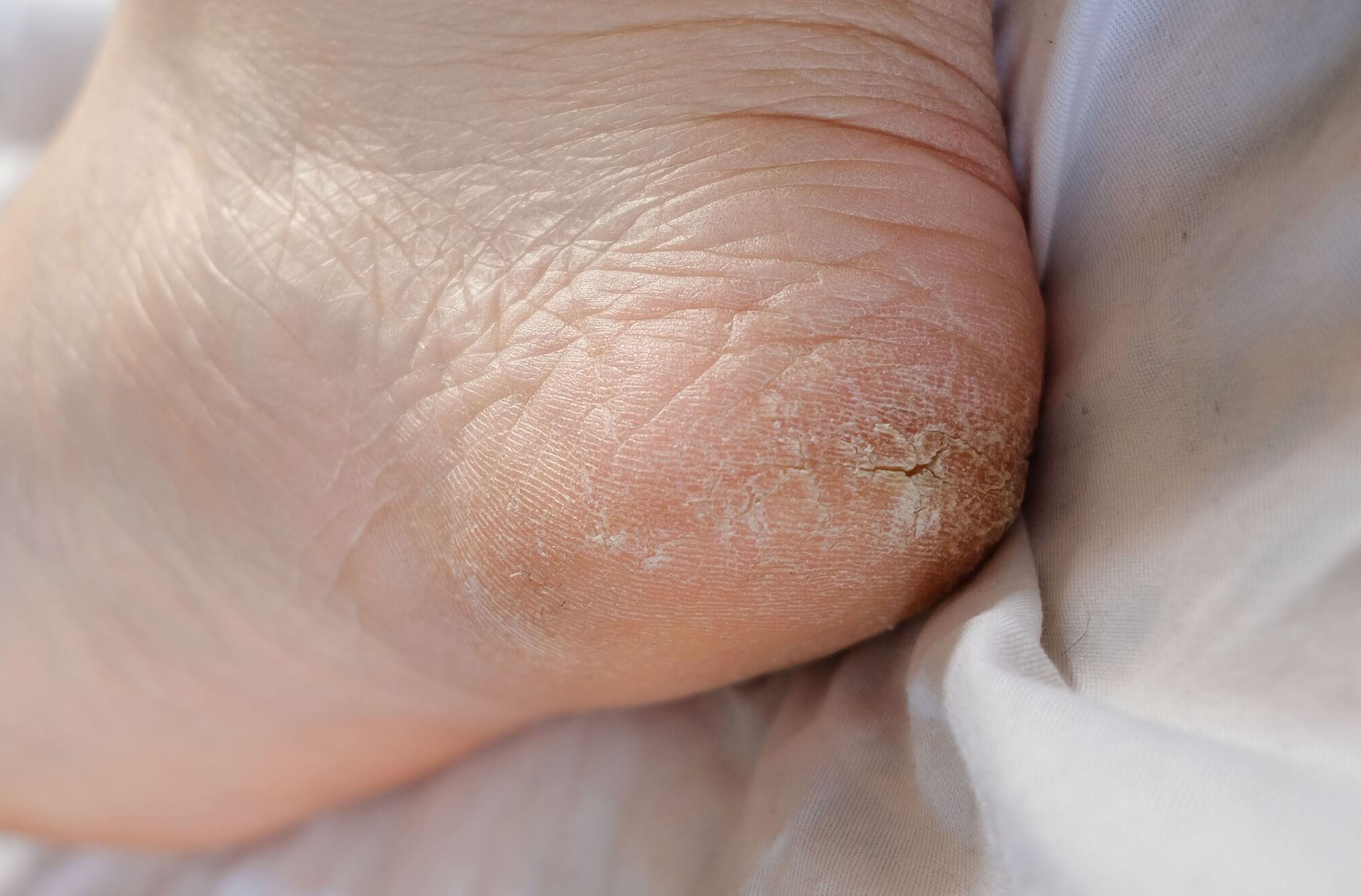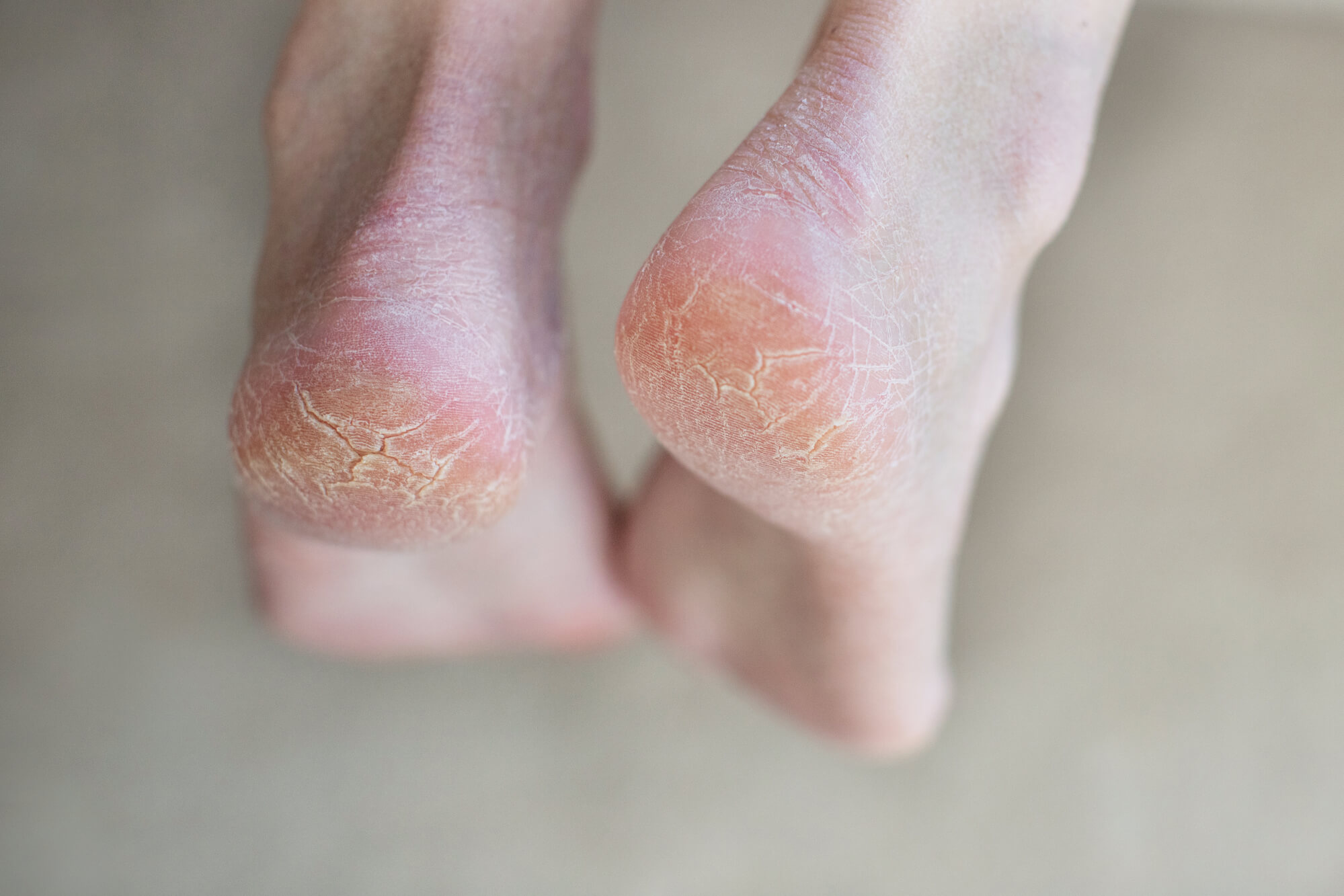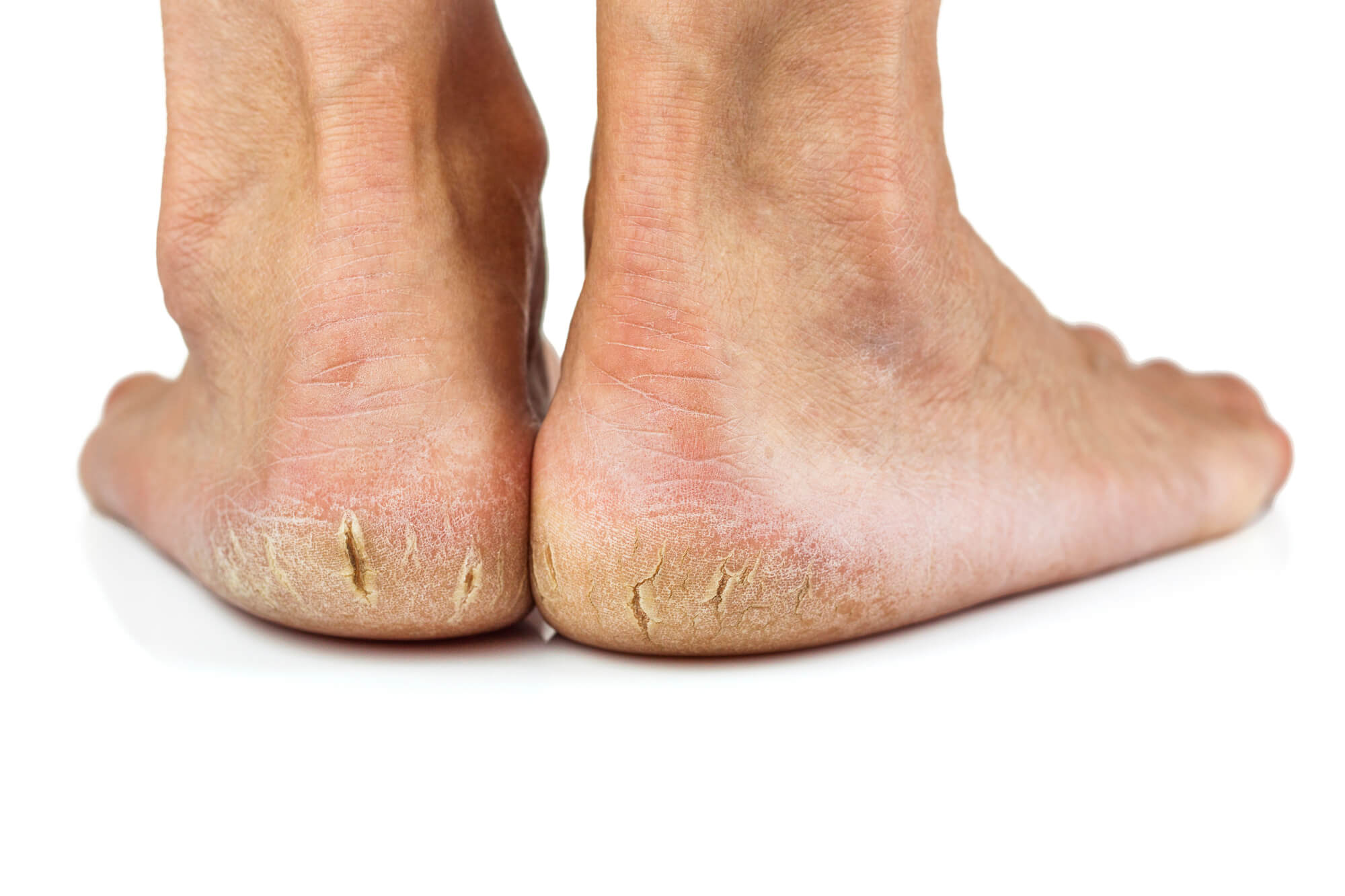Heel Fissures and Diabetic Feet
Diabetes can affect every part of the body, including the feet. One common foot issue that diabetics may experience is heel fissures or cracks in the skin of the heel. These fissures can be painful and, if left untreated, can lead to more serious complications. This article will explore the causes and treatment options and the steps you can take to prevent them.
What Are Heel Fissures?
Heel fissures, also known as cracked heels, are cracks or splits in the skin of the heel. They can range in severity from small, shallow cracks to deep fissures that extend down to the underlying tissue. They are often accompanied by dry, flaky skin and can be painful when pressure is applied to the affected area.
What Causes Heel Fissures?
Several factors can contribute to the development of heel fissures. One of the most common causes is dry skin. When the skin becomes too dry, it can become brittle and prone to cracking. This can be particularly common in people with diabetes, as high blood sugar levels can lead to dry, itchy skin.
Another factor contributing is the loss of sweat glands in the feet. These glands help to keep the skin moist and supple, and their loss can lead to dry, cracked skin. This can be a common complication of diabetes, as high blood sugar levels can damage sweat glands over time.
Finally, poor circulation can also contribute. When blood flow to the feet is impaired, the skin may not receive enough oxygen and nutrients, leading to dry, cracked skin. Diabetics are at a higher risk of poor circulation due to neuropathy, or nerve damage, which can cause a reduction in blood flow to the feet.

Who Is at Risk for Developing Heel Fissures?
Anyone can develop heel fissures, but people with diabetes are at a higher risk due to the abovementioned factors. In particular, diabetics who have neuropathy or poor circulation are more likely to develop heel fissures. Additionally, people who are overweight or obese are more likely due to the added pressure placed on the feet.
How Are Heel Fissures Treated?
Treatment for heel fissures will depend on the severity of the fissures and the underlying cause. It is important to see a podiatrist, or foot doctor, for proper diagnosis and treatment.
Non-Surgical Treatment Options
A podiatrist may recommend non-surgical treatment options for mild to moderate cracked heels. These may include:
- Moisturizing creams and ointments: Using a moisturizing cream or ointment can help to keep the skin hydrated and prevent further cracking.
- Foot soaks: Soaking the feet in warm water can help to soften the skin and make it easier to apply moisturizers.
- Open-toed shoes: Wearing sandals or other open-toed shoes can allow the heels to air out and reduce moisture buildup, which can lead to fissures.
- Protecting the heels: Using heel pads or other protective measures can help to reduce the pressure on the heels and prevent further cracking.

Surgical Treatment Options
In some cases, surgical treatment may be necessary to treat heel fissures. This may be recommended if the fissures are deep and not responding to non-surgical treatment or if the underlying cause of the fissures is not being adequately addressed. The type of surgery will depend on the specific needs of the patient but may include:
- Debridement: This procedure involves removing any dead or damaged tissue from the fissures.
- Skin grafting: A skin graft may sometimes be necessary to repair the fissures. This involves taking a piece of healthy skin from another part of the body and transplanting it to the affected area.
- Amputation: In severe cases, amputation may be necessary to prevent the spread of infection or other complications.

Preventing Heel Fissures
While cracked heels can be difficult to prevent completely, there are steps that diabetics can take to reduce their risk.
Proper Foot Care for Diabetics
Proper foot care is essential for diabetics to maintain healthy feet and prevent complications such as heel fissures. This includes:
- Checking feet daily: Diabetics should check their feet daily for any cuts, blisters, or other abnormalities.
- Wearing socks and shoes: It is important to wear socks and shoes to protect the feet and prevent injuries.
- Moisturizing the feet: Using a moisturizing cream or ointment can help to keep the skin hydrated and prevent dryness and cracking.
- Trimming toenails: Toenails should be trimmed straight across to prevent ingrown nails and other foot issues.
Wearing the Correct Footwear
Wearing the correct footwear can also help to prevent cracked heels. This includes:
- Wearing shoes that fit properly: Too tight or loose shoes can lead to foot issues, including fissures.
- Wearing shoes with good arch support: Shoes with good arch support can help to distribute weight evenly and reduce pressure on the heels.
- Wearing shoes with a wide toe box: Shoes with a wide toe box can provide ample room for the toes and reduce pressure on the heels.
Conclusion
Heel fissures can be a painful and potentially serious complication for people with diabetes. By understanding the causes and risk factors and taking steps to prevent them, diabetics can take control of their foot health and reduce their risk of complications. If you are experiencing heel fissures or other foot issues, it is important to see a podiatrist for proper diagnosis and treatment.

